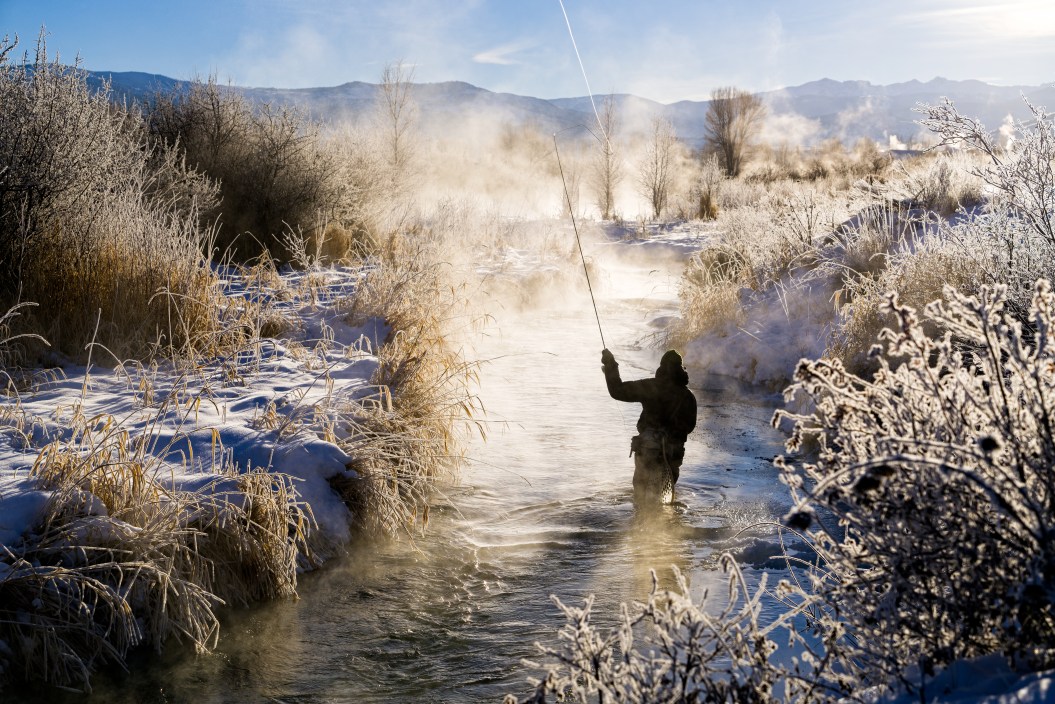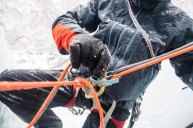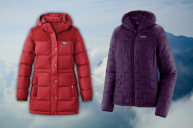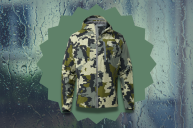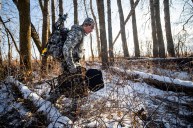For many, fishing is firmly a spring and summer activity. It's something to do when the sun is shining and the water is warm (or, at least, as warm as it's going to get). But, personally, some of my favorite fishing happens in the fall or even the winter. As the temperatures drop, so do the crowds, and there's something wonderful about having a fishing spot all to yourself amid the fall foliage popping and the first touch of frost on the ground.
I live in Alaska, where in October the mountains are covered in snow and temperatures are well below freezing each day. Though there's frost on the ground, fall fish species abound: It's steelhead season in some rivers, feeder king salmon are swimming in the ocean, and crab season has just opened.
But fishing at temps near and below freezing requires extra cold-water care. Hypothermia sets in far more quickly if you're wet and cold than if you're just cold, and fishing is an inherently wet activity. Wearing the proper layers, as well as knowing how to stay hydrated and well nourished, are key to safely enjoying cold-weather fishing.
Through a lot of trial and error—and some first-hand knowledge from my career as a high-altitude mountain guide—I've dialed in my fall fishing layering system to dress appropriately for the task at hand. These are my biggest takeaways and tricks.
Choose the Right Layers for Fall Fishing
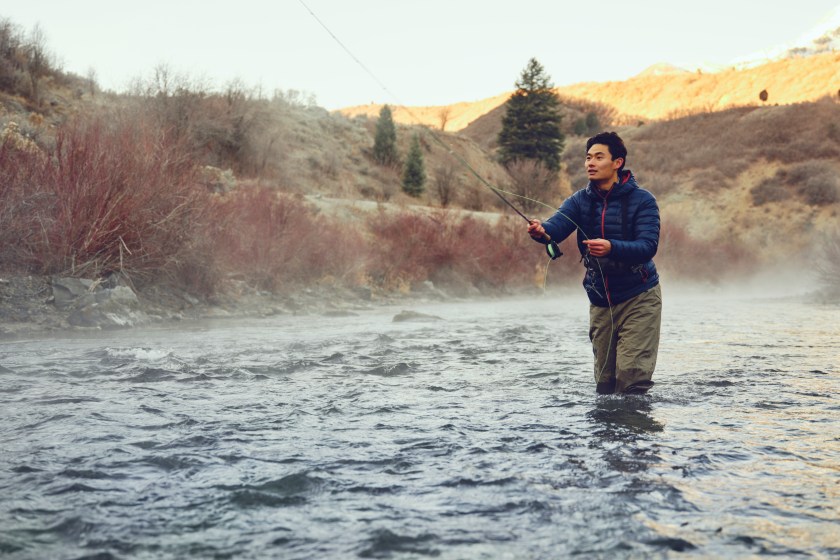
Getty Images, RichLegg
Let's start with the basics. You'll be wearing at least a few layers that you can keep on or take off as needed for temperature regulation. A few things to keep in mind:
- Every layer should fit over the others. Clothing that's too tight is not only uncomfortable, it can also restrict your blood flow, making you feel even colder. I size up on down jackets and hard-shell jackets and pants to ensure that they'll fit over my base and insulating layers. I also size my waders accordingly, making sure they can fit over layers of long johns and soft-shell pants.
- Stay away from cotton, as it doesn't retain heat when wet and it takes forever to dry. Wool, especially Merino wool, is ideal for base layers. I stick to fleece for my midweight layers and down for my insulation layers. If you plan to get wet, consider using a synthetic down; natural down turns into a heavy, clumpy mess when wet and won't keep you warm.
- Invested in top-of-the-line waterproof outer layers to keep water from soaking through. I almost always have my hard-shell jacket on when fishing in the cold; and if I'm not wearing waders, I have a pair of waterproof pants on as well.
1. Start With Base Layers
This layer, both top and bottom, lives against your skin. The most important thing to remember when choosing base layers is that they need to be able to wick sweat away. This is the one layer you can't take off, so you want to make sure you'll be comfortable stripping down to it if the temperature warms up.
If you're fishing on a river or hiking to a lake, stick to the ubiquitous fishing sun hoodie made of synthetic nylon and elastane (such as the SolarFlex Guide Cooling Hoody from Simms) on top and soft-shell pants on bottom, such as the KUIU Attack Pants (or a pair of workout leggings, which I personally prefer). These materials allow moisture to easily be wicked away if you start to sweat en route to the fishing hole; and the UPF protection helps protect your skin from UV rays, especially when reflected off the water.
If I'm hopping on my boat and jetting off to my favorite fishing spot, I usually opt for heavier base layers, such as a wool or fleece top and leggings. If you won't be sweating much, choose warmth over sweat-wicking for the layers against your skin. Smartwool has a whole arsenal of base layers to choose from that are made of Merino wool, making them incredibly soft, warm, and odor-resistant.
2. Add Insulation
Over base layers comes insulation, also known as midweight layers. How many and which ones you choose to wear depends on the temperature. On days in the 30s and 40s, I typically stick to just one fleece layer for insulation. However, this past week, I spent four days on the ocean fishing for king salmon, where temperatures were in the high teens; I had three different insulation layers, all of which I wore.
No matter the temperature, I've often found a hooded, three-quarter zip fleece such as the Patagonia R1 Fleece Pullover Hoody has the ability to serve as a transitionary, primary insulation layer. One single R1 fleece has seen me through almost a decade of cold-weather activities, from guiding in Denali to winter ultramarathons to fishing for steelhead in October in Alaska. The hood helps keep my head warm, and the deep zipper allows me to vent my core if I start working hard and heating up.
It's smart to also carry a lightweight down jacket for insulation. Having a style with a hood and a collar that zips up over your chin means you're covered if the weather gets nasty. If you're planning to get wet, choose synthetic fill.
In extremely cold weather, too much fabric on the arms can hinder movement. A down vest will keep your body warm and mobile down to temps below freezing. KUIU's Super Down LT Vest is a great choice for fishing and hunting—just make sure the vest is sized to fit over your other insulation layers.
For bottoms, if it's cold enough to warrant an insulation layer, opt for a single, thicker base layer; doubling up on layers can restrict movement and blood flow.
3. Bring Outer Layers
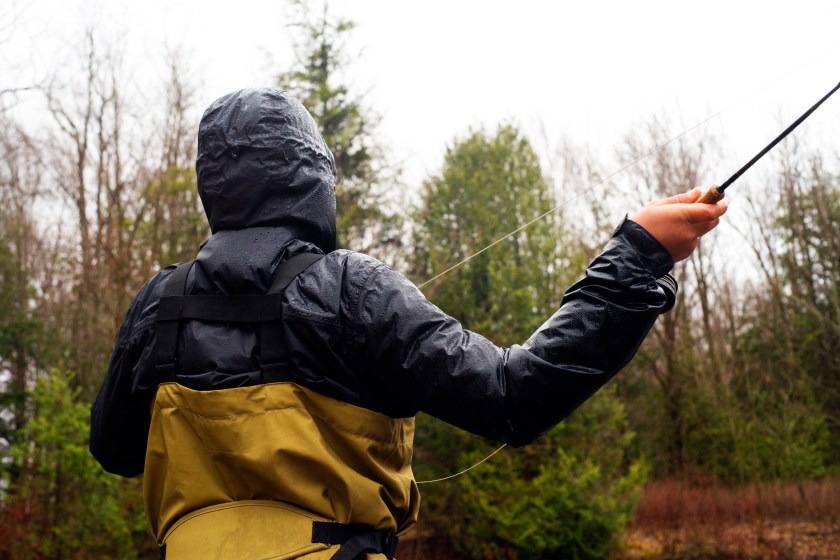
Getty Images, Fertnig
Both your top and bottom layers should, first and foremost, be wind-resistant and waterproof. If you're fly fishing, you've likely got the bottom layers already in the form of waders (more on that below).
If you're not using waders, look for a pair of thick, waterproof pants or bibs. I typically use my hiking rain pants, but Grundens Commercial Fishing Bib Pants are the choice in Alaska. Stretchy, durable, and incredibly weatherproof, these pants are made for commercial fishermen who don't have a choice about being out in the worst fishing conditions.
It's also smart to bring an extra set of down layers for additional warmth, just in case. I always pack a big down jacket, which is comfy to put on when I'm just hanging out on the boat or the river and doubles as an emergency layer if I find myself in a survival situation.
One of my favorite pro moves: Bring a down layer for your legs, such as the Black Diamond Down Pants or Skhoop's Alaska Long Down Skirt. Just remember: Down doesn't perform well when wet, and the nylon outer isn't very durable. So if conditions get soggy or you're getting into some hard work, throw your waterproof layers over the down to protect it from getting wet or torn.
4. Wear Waders
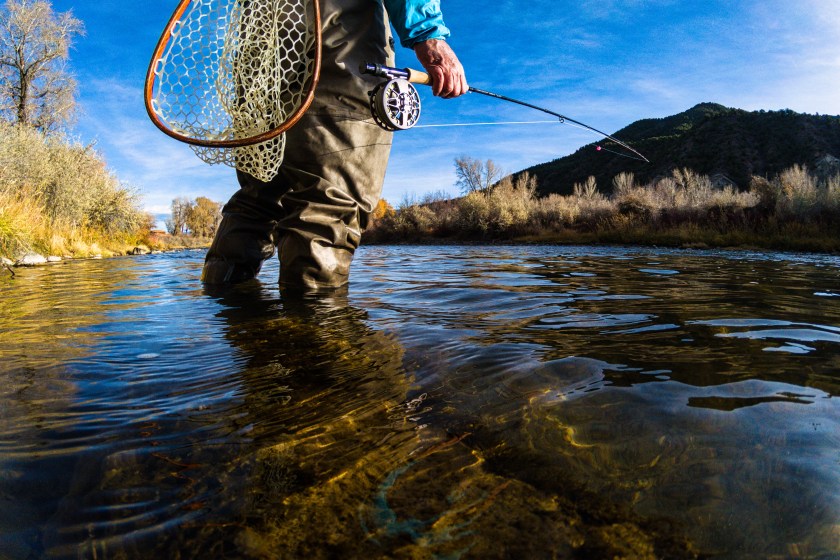
Getty Images, Adventure_Photo
Choosing neoprene waders or ones made of a breathable material is an age-old debate that I'm going to solve for you right now: Use the waders you already have.
Yes, neoprene waders are generally better for extremely cold weather. And if that's what you already own, particularly if they're a thicker material such as 5mm, use them. But if you have breathable waders, don't head to your local fishing store just to buy neoprene before trying what you have out first. Hopefully, you've sized up your breathable waders a little bit, and you can fit plenty of layers underneath them to stay warm.
That said, if you happen to develop a love for extreme winter fishing, are fishing frequently in cold weather, or are finding that your breathable waders just aren't cutting it, feel free to upgrade to neoprene. As a rule of thumb, the thicker the neoprene, the warmer the wader. Look for neoprene waders over 4mm thick.
5. Pack Accessories to Keep You Warm
Keeping your head, hands, and feet warm when fishing in cold weather is essential for enjoying your time out—and returning home with your extremities intact.
- Hats: I bring a thick fleece cap for my head, as well as a sun hat that I can layer under it. A buff, or gaiter such as the Skida neckwarmer, also helps keep my face warm and cold drafts from creeping down my collar.
- Insulated gloves: I have Raynaud's syndrome, which affects the circulation in my hands and feet, so I have to take keeping them warm seriously. I typically use a pair of SHOWA insulated gloves. They're a bit like dish gloves and are fully waterproof but lined with soft insulation. A pair of insulated Kinco gloves works, too, though they aren't as waterproof and I find my dexterity is more limited.
- Waterproof boots: For shoes, if I'm not in my waders, I use the ever-faithful, fully waterproof Xtratuff boots. They practically hand you a pair of these boots when you move to Alaska, and they are favored by fishermen, farmers, and just about anyone who deals with wet, cold conditions. My favorite pair is the Legacy NXT Ice Boot, which is insulated and has an anti-slip sole. They work great for lake fishing, shallow wading, or trolling from a boat.
- Thick socks: If I'm wading, I stick to my usual wading boots and just make sure to wear extra-thick socks—preferably made of wool, such as Darn Tough's Heavyweight Hunting Sock—and take time out of the river to warm my feet up. I'll also slip in some toe warmers, regardless of what boot I'm using.
Other Must-Haves for Successful Fall Fishing
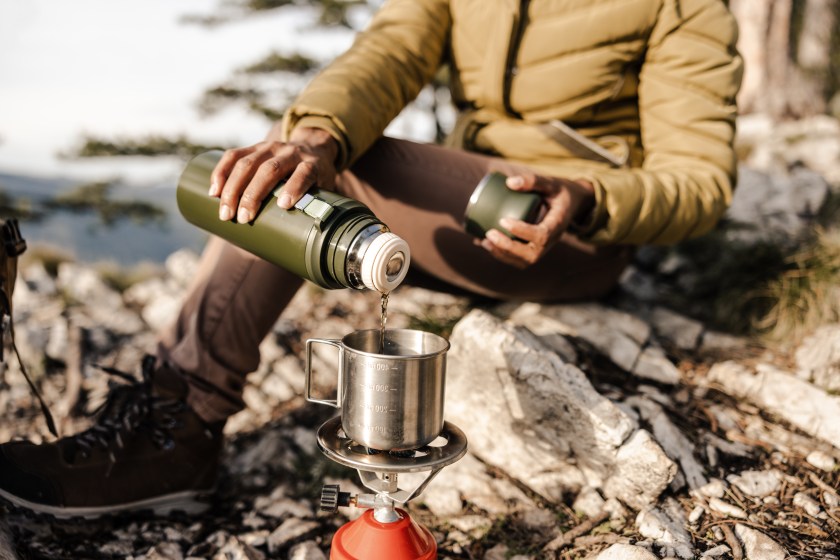
Getty Images, MilanMarkovic
I'm all about staying warm when it's cold out. And no matter the activity, I typically bring a few extra items purely for comfort when I'm recreating in colder temperatures:
- A hot drink—bonus points if it's a hot toddy!—can go a long way to warm up you and your friends and raise your spirits. I also like to put hot drinks in small Nalgene bottles and slip them into my jacket or waders. Because Nalgenes aren't insulated, they act as a little hot water bottle to warm me up, as well as hydrate me when I take a sip.
- A small stove such as a Jetboil, which can easily boil a pot of water to keep your hot drinks replenished all day long.
- High-calorie snacks, since your body burns far more calories in cold weather than it does in warm weather, even if you are relatively sedentary. Eating consistently throughout a cold day will help your body keep your core temperature up.
Lastly, bring a good attitude. The thought of spending time on or near cold water when temperatures near freezing used to fill me with horror. Now, I love fishing in the fall and have found that as long as I take care of myself, wear the proper clothes, keep moving, and bring a couple of good friends to take my mind off the chill, I can enjoy my favorite fishing holes long after other people have hung up their rods until spring.
